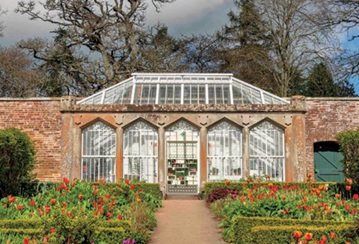Permanent structure
In reality no structures are truly permanent. They will degrade over time and will ultimately fall into disrepair, fall out of use or will be demolished.
However, a structure may be considered to be permanent if it is designed for a long-term use, rather than short-term or temporary use. The duration that might be considered ‘long term’ will vary depending on the design life of the structure.
BS EN 1990, Eurocode - Basis of structural design, (Eurocode 0) gives indicative design lives for various types of structure:
- Category 1: Temporary structures, not including structures or parts of structures that can be dismantled with a view to being re-used – 10 years.
- Category 2: Replaceable structural parts, e.g. gantry girders, bearings – 10 to 25 years.
- Category 3: Agricultural and similar buildings – 15 to 30 years.
- Category 4: Building structures and other common structures – 50 years.
- Category 5: Monumental building structures, bridges and other civil engineering structures – 100 years.
The actual life of a structure will vary depending on factors including:
- Materials.
- Workmanship.
- Moisture, humidity and rain.
- Wind.
- Temperature and temperature fluctuations.
- Pollution.
- Solar radiation.
- Maintenance.
- Intensity of use.
In legal terms, The Town and Country Planning (General Permitted Development) Order 1995 defines a temporary use as one that does not exceed 28 days in any calendar year. Beyond this, under normal circumstances, a structure would be considered to be ‘permanent’ and so would require planning permission. However, this is reduced to 14 days for some uses, and only certain temporary uses are permitted at all without planning permission. See Temporary use for more information.
Schedule 2 of the building regulations defines a temporary building as, ‘A building that is not intended to remain where it is erected for more than 28 days’. For more information see: Temporary structure.
During the construction process, it is normal to distinguish between permanent works and temporary works. Temporary works may also be regarded as temporary structures comprising an arrangement of elements that are necessary only during the construction process itself. These can include scaffolding, formwork, trench supports and so on.
Temporary works are defined in BS5975: 2008 + A1: 2001 Code of Practice for Temporary Works Procedures and the Permissible Stress Design of Falsework as ‘parts of the works that allow or enable construction of, protect, support or provide access to, the permanent works and which might or might not remain in place at the completion of the works.’
[edit] Related articles on Designing Buildings Wiki
Featured articles and news
The benefits of engaging with insulation manufacturers
When considering ground floor constructions.
Lighting Industry endorses Blueprint for Electrification
The Lighting Industry Association fully supports the ECA Blueprint as a timely, urgent call to action.
BSRIA Sentinel Clerk of Works Training Case Study
Strengthening expertise to enhance service delivery with integrated cutting-edge industry knowledge.
Impact report from the Supply Chain Sustainability School
Free sustainability skills, training and support delivered to thousands of UK companies to help cut carbon.
The Building Safety Forum at the Installershow 2025
With speakers confirmed for 24 June as part of Building Safety Week.
The UK’s largest air pollution campaign.
Future Homes Standard, now includes solar, but what else?
Will the new standard, due to in the Autumn, go far enough in terms of performance ?
BSRIA Briefing: Cleaner Air, Better tomorrow
A look back at issues relating to inside and outside air quality, discussed during the BSRIA briefing in 2023.
Restoring Abbotsford's hothouse
Bringing the writer Walter Scott's garden to life.
Reflections on the spending review with CIAT.
Retired firefighter cycles world to raise Grenfell funds
Leaving on 14 June 2025 Stephen will raise money for youth and schools through the Grenfell Foundation.
Key points for construction at a glance with industry reactions.
Functionality, visibility and sustainability
The simpler approach to specification.
Architects, architecture, buildings, and inspiration in film
The close ties between makers and the movies, with our long list of suggested viewing.
SELECT three-point plan for action issued to MSPs
Call for Scottish regulation, green skills and recognition of electrotechnical industry as part of a manifesto for Scottish Parliamentary elections.
UCEM becomes the University of the Built Environment
Major milestone in its 106-year history, follows recent merger with London School of Architecture (LSE).
Professional practical experience for Architects in training
The long process to transform the nature of education and professional practical experience in the Architecture profession following recent reports.























